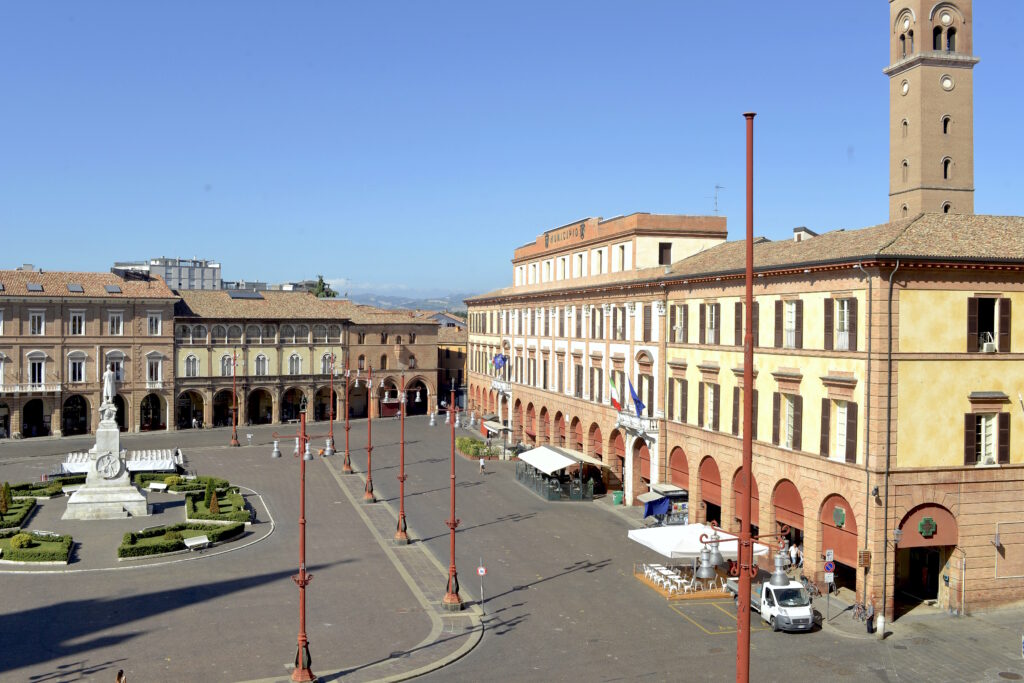First stop
The journey begins within the ancient walls of Forlì, a city with noble traditions and an illustrious past, precisely from the church of Santa Maria dei Servi, renowned as the Church of San Pellegrino Laziosi. San Pellegrino lived in the 14th century and he is famous for a miracle of healing. Struck by gangrene in his leg due to his penance of never sitting down, he risked amputation. The night before the intervention, praying in front of a Crucifix (the work was made by the artist Giuliano da Rimini and is located inside the church), he had a feverish dream in which Christ healed his wound. Upon awakening, he realized he had been miraculously saved. Still alive, he became known as the Holy Healer. For this reason, he is considered the patron saint of cancer patients and those suffering from chronic pain in the feet and legs. The church of Santa Maria dei Servi, built in the 12th century, has undergone several transformations over the centuries, until it assumed its current form in the 18th century.
The façade, made of terracotta and characterized by sober simplicity, creates a fascinating contrast with the interior, dating back to the seventeenth century. On the right of the church you can find the evocative chapel dedicated to San Pellegrino, whose design is attributed to the famous architect Giuseppe Merenda. Of particular interest are the relics of the Saint, kept behind the altar, and the painting "Christ crucified who heals the leg in San Pellegrino", a masterpiece by Simone Cantarini based on a drawing by Guido Reni.
Every year, on May 1st, on the occasion of the Feast of the Saint, the traditional Feast of Cedars takes place, which tradition states were used by Pellegrino Laziosi for their alleged healing properties. Throughout the day, the square in front of the church and the surrounding streets come alive with stands selling these fragrant citrus fruits.























